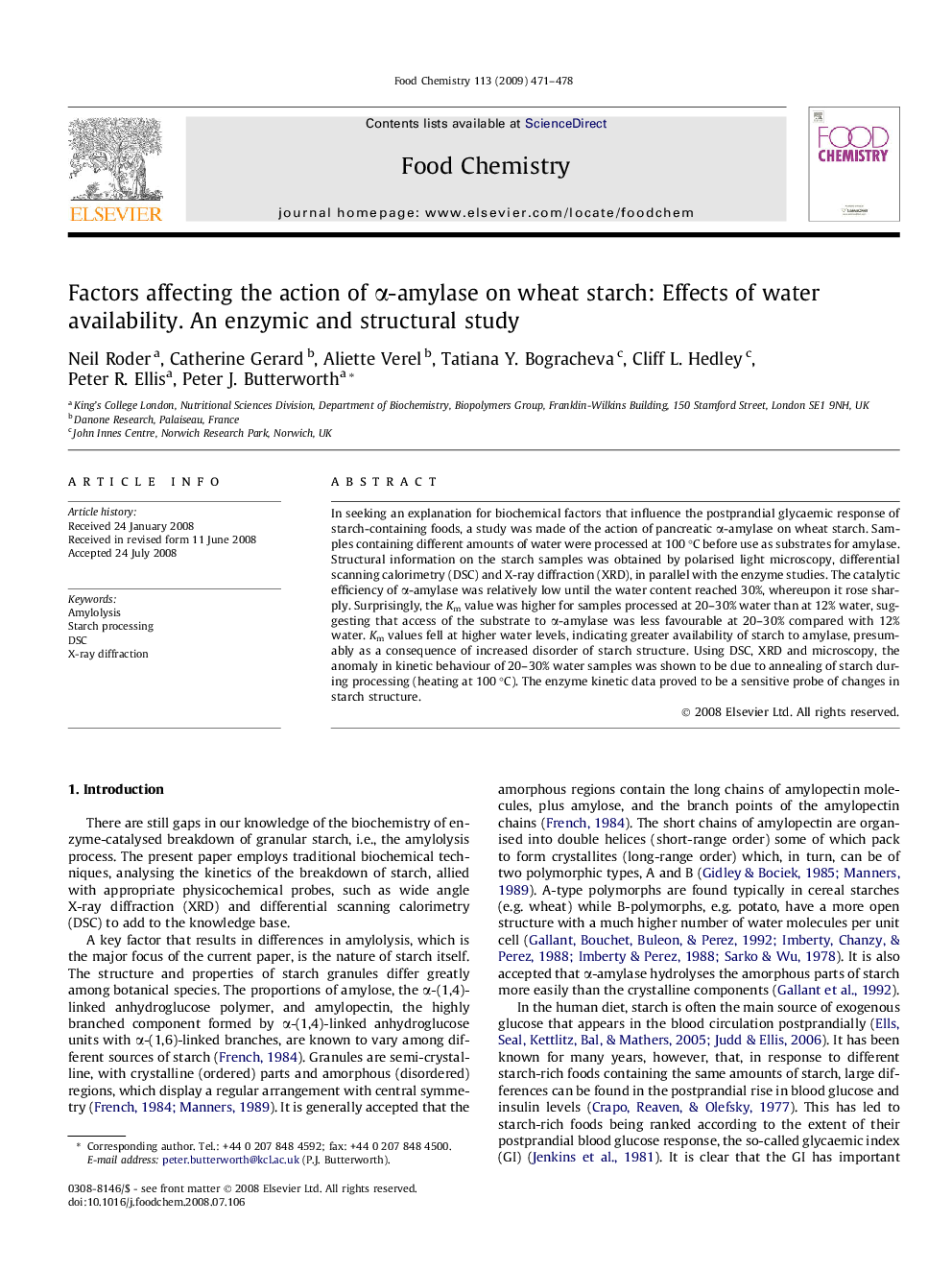| Article ID | Journal | Published Year | Pages | File Type |
|---|---|---|---|---|
| 1191279 | Food Chemistry | 2009 | 8 Pages |
In seeking an explanation for biochemical factors that influence the postprandial glycaemic response of starch-containing foods, a study was made of the action of pancreatic α-amylase on wheat starch. Samples containing different amounts of water were processed at 100 °C before use as substrates for amylase. Structural information on the starch samples was obtained by polarised light microscopy, differential scanning calorimetry (DSC) and X-ray diffraction (XRD), in parallel with the enzyme studies. The catalytic efficiency of α-amylase was relatively low until the water content reached 30%, whereupon it rose sharply. Surprisingly, the Km value was higher for samples processed at 20–30% water than at 12% water, suggesting that access of the substrate to α-amylase was less favourable at 20–30% compared with 12% water. Km values fell at higher water levels, indicating greater availability of starch to amylase, presumably as a consequence of increased disorder of starch structure. Using DSC, XRD and microscopy, the anomaly in kinetic behaviour of 20–30% water samples was shown to be due to annealing of starch during processing (heating at 100 °C). The enzyme kinetic data proved to be a sensitive probe of changes in starch structure.
